Eficacia del apósito natural versus convencional en cicatrización de leishmaniasis cutánea. Mérida, 2024
Effectiveness of the natural dressing vs conventional dressing in healing of cutaneous leishmaniasis. Merida, 2024
Resumen
DOI: https://doi.org/10.53766/GICOS/2024.09.03.12
La Leishmaniasis Cutánea Localizada (LCL) es un problema de salud pública mundial y catalogada Enfermedad Infecciosa Desatendida, en Venezuela es de predominio rural y bajas condiciones sociales. A nivel mundial, regional y local el enfoque terapéutico es netamente antiparasitario en con antimoniales con acceso, costo, respuesta terapéutica y efectos secundarios no alentadores. La úlcera como “necesidad sentida” queda en relego de manejo entre el (médico, enfermera) que enfrenta deficiencias de recursos, variabilidad procedimental, atención de bajo valor por la Cura Seca hasta incluso con iatrogenia. Hechos que hacen relucir el espacio socioantropológico, o sea las percepciones y creencias (saber popular) frecuentemente “tergiversados”, hacen el manejo de úlceras propiamente y control parasitario un verdadero reto. En respuesta, la Organización Mundial de la Salud (OMS) auspicia buscar nuevas terapéuticas, siendo la Cura Húmeda el actual enfoque científico en cicatrización cutánea, se plantea un dispositivo médico de cubrimiento al lecho úlcerado. Objetivo: determinar la eficacia del Apósito Natural (AN) versus el Apósito Convencional (AC) en la curación de LCL. Metodología: estudio experimental (Fase III), aleatorio, doble ciego en LCL del estado Mérida (Venezuela). Datos se analizan con Epidat 3.1 y SPSS 20; calculo del tamaño muestral (99 % de confianza). Resultados: se halla diferencias significativas al AN en las tasas de curación y sus variables de comparación, sin efectos secundarios, permitiendo buena calidad de vida. Conclusión: el AN posee eficacia para la curación de LCL y dada la significativa bondad clínico – terapéutica se plantea como herramienta de elección en el manejo de estas úlceras.
Localized Cutaneous Leishmaniasis (LCL) is a global public health problem and is classified as a Neglected Infectious Disease. In Venezuela, it is predominantly rural and has low social conditions. At the global, regional and local level, the therapeutic approach is clearly antiparasitic with antimonials, with access, cost, therapeutic response and side effects that are not encouraging. The ulcer as a “felt need” is relegated to management by the (doctor, nurse) who faces resource deficiencies, procedural variability, low-value care due to Dry Cure, even with iatrogenesis. Facts that highlight the socio-anthropological space, that is, perceptions and beliefs (popular knowledge) frequently “distorted”, make the proper management of ulcers and parasite control a real challenge. In response, the World Health Organization (WHO) supports the search for new therapies, with Wet Cure being the current scientific approach to cutaneous healing, a medical device for covering the ulcerated bed is proposed. Objective: To determine the efficacy of Natural Dressing (NA) versus Conventional Dressing (CD) in the healing of LCL. Methodology: an experimental study (Phase III), randomized, double-blind was designed in LCL in the state of Merida (Venezuela). Data were analyzed with Epidat 3.1 and SPSS 20; the sample size was calculated (99% confidence interval). Results: significant differences were found in the healing rates of NA and its comparison variables, with no side effects, allowing a good quality of life. Conclusion: NA is effective in the healing of LCL and given its significant clinical-therapeutic benefits, it is considered the tool of choice in the management of these ulcers.
Recibido: 20-08-2024
Aceptado: 28-09-2024
Publicado: 01-11-2024
Palabras clave
Texto completo:
PDFReferencias
Akshatha, V., Giridhar, P. & Ravishankar, G. (2011). Food, Ethanobotanical and Diversified Applications of Bixa Orellana L.: A Scope for its Improvement through Biotechnological Mediation. Indian Journal of Fundamental and Applied Life Sciences, 1(4), 9-31.
Araújo, D., Suênia, M., Accioly, F., Nervo, N., De Oliveira, M. & Flamarion, C. (2014). Traditional Uses, Chemical Constituents, and Biological Activities of Bixa orellana L.: A Review. The ScientificWorld Journal.
Capella, S., Tillmann, M., Félix, A., Fontoura, E., Fernandes, C. & Freitag, R. (2016). Potencial cicatricial da Bixa orellana L. em feridas cutâneas: estudo em modelo experimental. Arq. Bras. Med. Vet. Zootec, 68(1), 104-112.
Carrero J., Chipia J., Castillo G. D., Carrero E., y Castillo T. D. (2016). Eficacia del apósito bioactivo natural versus convencional en cicatrización cutánea. Mérida, Revista Gicos, 1(4), 03-22.
Carrero J., Rodríguez N., Carrero E., Carrero A., y Carrero, L. (2020). Modelo para el tratamiento de Leishmaniasis cutánea: interdisciplinariedad biomédico, clínico y socio-antropológico. Tribuna del Investigador, 21(2), 215-223.
Carrero, L., Carrero, J., Vega, M., Carrero, E., y Carrero, A. (2021). Instrumento de evaluación (acrónimo tigre) del proceso de cicatrización por deterioro de la integridad cutánea.
Revista GICOS, 6(1), 180 – 194.
Carrero, R., Borges, R., Convit, J., Avilan, R., y De Lima, H. (2011). Inmunoterapia de la Leishmaniasis cutánea: factores que influencian su efectividad. Bol Mal Salud Amb, 51(1), 25-33.
Carrero, J., Chipia, J. y Castillo, D. (2016). Cicatrización cutánea, factores que influyen en su efectividad. GICOS, 1(3), 34-60.
C de Vries, H. & Schallig, H. (2022). Cutaneous Leishmaniasis: A Narrative Review into Diagnosis and Management Developments. American Journal of Clinical Dermatology, 23(6), 823-840.
Christian, L., Graham, J., Padgett, D., Glaser, R., & Kiecolt-Glaser, J. (2006). Stress and wound healing. Neuroimmunomodulation, 13(5-6), 337–346.
Degree, H., & Dooms-Goosens, A. (1985). Patch testing with silver sulfadiazine cream. Contact Dermatitis, 12, 33-37.
De Lima, H., Borges, R., Escobar, J. y Convit, J. (2010). Leishmaniasis cutánea americana en Venezuela: un análisis clínico epidemiológico a nivel nacional y por entidad federal, 1988-2007. Bol Mal Salud Amb, 50(2), 283-300.
Deutsch C., Edwards D. & Myers S. (2017). Wound dressings. Br J Hosp Med (Lond), 78:C103–C109.
Espíritu, A., Lao, N., & Guerrero, J. (2016). Burn wound healing potential of Bixa Orellana Linn [Bixaceae] leaf extracts on albino mice. Journal of Medicinal Plants Studies, 4(1), 84-87.
García M., Monzote L., Montalvo A., & Scull, R. (2011). Effect of Bixa orellana against Leishmania amazonensis. Forschende Komplementarmedizin, 18(6), 351–353.
Goonoo N., Laetitia M., Chummun I., Karuri N., Badu K., Gimié F., Bergrath J., & Schulze, M. (2022). Nanomedicine-based strategies to improve treatment of cutaneous leishmaniasis. R Soc Open Sci, 9(6), 220058.
Hinman, C. & Maibach, H. (1963). Effect of air exposure and occlusion on experimental human skin wounds. Nature, 200, 377-8.
Hussain K., Abbas R., Abbas A., Raza M., Muhamaad, R., Muhamaad, M., Muhamaad, I., Muhamaad, K. & Muhamaad, R. (2021). Therapeutic potential of medicinal plants against Leishmaniasis: a public health concern. Bol Latinoam Caribe Plant Med Aromat, 20(2), 123-131.
Jones-Caballero, M., Peñas, P., García-Díez, A., Chren, M. y Badía, X. (2002). La versión española de Skindex-29. Un instrumento de medida de la calidad de vida en pacientes con enfermedades cutáneas. Med Clin (Barc), 118(1), 5-9.
Junker J., Kamel R., Caterson E., & Eriksson, E. (2013). Clinical impact upon wound healing and inflammation in moist, wet, and dry environments. Adv Wound Care (New Rochelle), 3(2), 348–356.
Kruse, C., Nuutila, K., Lee, C., Kiwanuka, E., Singh, M., Caterson, E. J., Eriksson, E., y Sørensen, & J. (2015). The external microenvironment of healing skin wounds. Wound Repair and Regeneration, 23(4), 456-464.
Ley Orgánica de Pueblos y Comunidades Indígenas (2005). Gaceta Oficial de la República Bolivariana de Venezuela. No. 38344, 2005.
Lund-Nielsen, B., Adamsen, L., Kolmos, H. J., Rørth, M. R., Tolver, A., & Gottrup, F. (2011). The effect of honey-coated bandages compared with silver-coated bandages on treatment of malignant wounds - a randomized study. Wound Repair and Regeneration, 19(6), 664-670.
Mandal M., & Mandal, S. (2011). Honey: its medicinal property and antibacterial activity. Asian Pac J Trop Biomed, (1), 154–160.
Martos MV, Gómez GL, Navajas YR, Montoya JE, Sendra E, Álvarez JA, & López, JF. (2012). In vitro antioxidant and antibacterial activities of extracts from Annatto (Bixa orellana L.) leaves and seeds. Journal of Food Safety, 32(4), 399–406.
Medina-Flores, D., Ulloa-Urizar, G., Camere-Colarossi, R., Caballero-García, S., Mayta-Tovalino, F. & Mendoza, J. (2016). Antibacterial activity of Bixa orellana L. (achiote) against Streptococcus mutans and Streptococcus sanguine. Asian Pac J Trop Biomed, 6(5), 400–403.
Mennini N., Greco A., & Bellingeri, A. (2016). Quality of wound dressings: a first step in establishing shared criteria and objective procedures to evaluate their performance. J Wound Care. 25, 428–437.
Muluadam, B., Admasu Y., Ayen B., Fitiwi G., & Adie, B. (2022). Wound-related procedural pain management in a resource limited setting:Systematic review. International Journal of Surgery Open, 47.
Navarrete, N. (2013). Materiales para cobertura cutánea transitoria de heridas agudas y crónicas. Rev. Chilena Dermatol, 29 (4), 340 – 343.
Nguyen H., Ngoc T., Nguyenb A., & Nguyen, H. (2023). Biomedical materials for wound dressing: recent advances and applications. RSC Adv. 13:5509-28.
Nuutila K., & Eriksson, E. (2021). Moist Wound Healing with Commonly Available Dressings. Adv Wound Care (New Rochelle), 10(12), 685–698.
Organización Mundial de la Salud. (2010). Informe mundial sobre prevención de las lesiones en los niños. https://iris.paho.org/handle/10665.2/31079
Organización Mundial de la Salud. (2013). Estrategia de la OMS sobre medicina tradicional, 2014-2023. https://iris.who.int/bitstream/handle/10665/95008/9789243506098_spa.pdf
Organización Mundial de la Salud (2024). Enfermedades tropicales desatendidas. https://www.who.int/es/news-room/questions-and-answers/item/neglected-tropical-diseases
Organización Panamericana de la Salud. (2013). Leishmaniasis en las Américas: recomendaciones para el tratamiento. https://iris.paho.org/handle/10665.2/7704
Organización Panamericana de la Salud. (2023). Manual de procedimientos para la vigilancia y el control de las Leishmaniasis en la Región de las Américas. https://www.paho.org/es/documentos/manual-procedimientos-para-vigilancia-control-leishmaniasis-region-americas
Oryan, A. (2015). Plant-derived compounds in treatment of Leishmaniasis. Iranian Journal of Veterinary Research, 16(1), 1-19.
Palheta, I., Tavares-Martins, A., Lucas, F., & Jardim, M. (2017). Ethnobotanical study of medicinal plants in urban home gardens in the city of Abaetetuba, Pará state, Brazil. Bol Latinoam Caribe Plant Med Aromat, 16(3), 206–262.
Piva, R., Johann, A., Costa, C., Miguel, O., Rosa, E., Azevedo, L., Trevilatto, P., Ignacio, S., Bettega, P., & Gregio, A. (2013). Bixin action in the healing process of rats mouth wounds. Current Pharmaceutical Biotechnology, 14(9), 785–591.
Priyanka, G. (2016). Bixa Orellana: A Review on its Phytochemistry, Traditional and Pharmacological uses. World J Pharm Sci. 4(3), 500-510.
Puentes, J. y Hurrell, J. (2015). Plantas andinas y sus productos comercializados con fines medicinales y alimentarios en el Área Metropolitana Buenos Aires-La Plata, Argentina. Boletín Latinoamericano y del Caribe de Plantas Medicinales y Aromáticas, 14(3), 206-236.
Radhika B., Begum N., & Srisailam K. (2017). In-Vitro and In-Vivo Anti-Inflammatory and Analgesic Activity of Bixa orellana Linn Leaf Extracts. Int J Pharm Pharmacol 1, 108.
Ramos, N., Muñoz, C. y Díaz, C. (2019). Tratamiento tradicional de la Leishmaniasis en pobladores de la localidad de Magdalena, Amazonas - 2017. Revista Científica UNTRM: Ciencias Sociales Y Humanidades, 1(3), 36–42.
Rojas M., Gómez K., & Villa J. (2021). Topical Treatments for Cutaneous Leishmaniasis: A Narrative Review, with Systematic Literature Search. Kasmera, 49(2).
Sáenz E., y Sánchez-Saldaña, L. (2005). Antibióticos tópicos. Dermatología Peruana, 15(1), 7-20.
Sandeep, D., Srija, M., Suguna, K., Praveen, V. & Rajesh, S. (2015). A review on role of medicinal plants on Effective wound healing. International journal of novel trends in pharmaceutical sciences, 5(6).
Santos, J., Sousa, M., Silva, E. & Aguiar, J. (2014). Avaliação histomorfométrica do efeito do extrato aquoso de urucum (norbixina) no processo de cicatrização de feridas cutâneas em ratos. Rev. Bras. Pl. Med., Campinas, 16(3), 637-643.
Sasidharan, S. & Saudagar, P. (2021). Leishmaniasis: where are we and where are we heading? Res de Parásitol, 120(5), 1541–1554.
Secretaría de Salud. (2022). Guía para la Atención Médica de la Leishmaniasis en México. Centro Nacional de Programas Preventivos y Control de Enfermedades (CENAPRECE).
Shahid, I., Luqman, R. & Faqeer, M. (2016). Phytochemistry, biological activities and potential of annatto in natural colorant production for industrial applications. Journal of Advanced Research, 7(3), 499-514.
Sinha, S., Free, B., & Ladlow, O. (2022). The art and science of selecting appropriate dressings for acute open wounds in general practice. Reprinted from AJGP. 51,11.
Sood, A., Granick, M. & Tomaselli, N. (2014). Wound Dressings and Comparative Effectiveness Data. Adv Wound Care (New Rochelle). 3(8), 511–529.
Subhashree, P. & Sangram, K. (2016). Evaluation of wound healing potential of crude leave extracts of bixa orellana linn. World Journal of Pharmacy and Pharmaceutical Sciences, 5(8).
Svensjo, T., Pomahac, B. & Yao, F. (2000). Accelerated healing of full-thickness skin wounds in a wet environment. Plast Reconstr Surg., 106,602.
Valencia, L., Martel E., Vargas C., Rodríguez, C., Olivas, I. (2016). Apósitos de polímeros naturales para regeneración de piel. Revista Mexicana de Ingeniería Biomédica. 37, 3.
Vásquez, L. (2009). Terapéutica antileishmania: revisando el pasado, el presente y el futuro. Gaceta Médica de Caracas, 117(2), 93-111.
Wiegand C., Tittelbach J., Hipler U., & Elsner P. (2015). Clinical efficacy of dressings for treatment of heavily exuding chronic wounds. Chronic Wound Care Manage Res; 2, 101.
Winter, G. (1962). Formation of the scab and the rate of epithelization of superficial wounds in the skin of the young domestic pig. Nature. 2, 193 - 293.
Wodash, A. (2014). Wet-to-Dry Dressings Do Not Provide Moist Wound Healing. Journal of the American College of Clinical Wound Specialists 4, 63-66.
Yoke K., Arifah A., Sukardi S., Roslida A., Somchit M., & Zuraini A. (2011). Bixa Orellana leaves extract inhibits bradykinin-induced inflammation through suppression of nitric oxide production. Medical Principles and Practice, 20(2), 142–6.
Zuraini A., Somchit M., Abdul R., Sukardi S., Fazira A., Yong Y., Lee H. & Cheng, X. (2007). Inhibitions of acute and chronic inflammations by Bixa Orellana leaves extract. Planta Medica. 73(09).
Enlaces refback
- No hay ningún enlace refback.
Depósito Legal Electrónico: ME2016000090
ISSN Electrónico: 2610-797X
DOI: https://doi.org/10.53766/GICOS
| Se encuentra actualmente registrada y aceptada en las siguientes base de datos, directorios e índices: | |||
 | |||
 |  |  |  |
 | 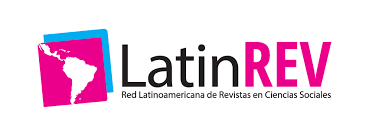 | ||
 | 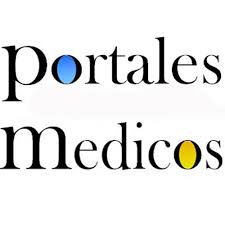 |  |  |
 |  | 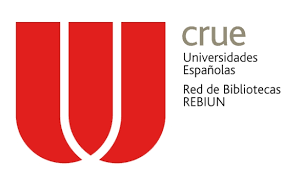 | 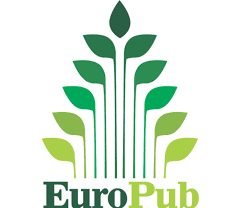 |
 |  | 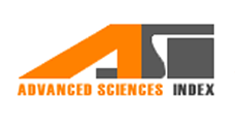 | 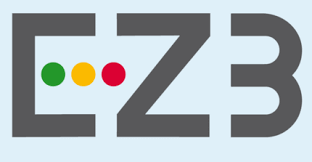 |
 |  |  |  |
![]()
Todos los documentos publicados en esta revista se distribuyen bajo una
Licencia Creative Commons Atribución -No Comercial- Compartir Igual 4.0 Internacional.
Por lo que el envío, procesamiento y publicación de artículos en la revista es totalmente gratuito.

